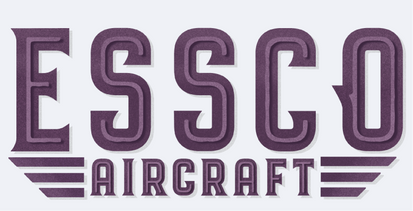
The Stipa-Caproni: The Flying Barrel
With its distinctive barrel-shaped fuselage, the Stipa-Caproni, an Italian-designed aircraft, looked more like a giant flying tube than your traditional airplane. Designed to increase engine efficiency and improve airflow, the Stipa-Caproni was an ambitious attempt to revolutionize aviation aerodynamics.
So why was this "flying barrel" built, and why didn’t it catch on?
Why Was the Stipa-Caproni Built?
The Stipa-Caproni was designed by Luigi Stipa, an Italian aeronautical engineer, in collaboration with Caproni, one of Italy’s leading aircraft manufacturers. Stipa was fascinated by the concept of an “intubed propeller”, or what we now call a ducted fan. He theorized that enclosing a propeller inside a large tube would:
✔ Improve engine efficiency by directing airflow more effectively.
✔ Increase thrust by reducing energy loss from propeller turbulence.
✔ Enhance stability by creating a smoother airflow around the fuselage.
This concept was later recognized as an early step toward jet propulsion, influencing future turbofan engines.

Photo Credit: planehistoria.com
What Was Its Intended Purpose?
The Stipa-Caproni was built primarily as an experimental aircraft to validate Stipa’s aerodynamic theories. While it was not intended for commercial or military use, the potential benefits included:
✔ Higher Fuel Efficiency – The ducted design aimed to make better use of engine power.
✔ Improved Lift and Stability – The tube-like fuselage created a more controlled, even airflow, reducing turbulence.
✔ Foundation for Future Propulsion Systems – Though the design was unconventional, Stipa believed his intubated propeller concept could be adapted for larger, practical aircraft.
Flight tests confirmed that the aircraft was stable and performed as expected, but it never moved beyond the prototype phase.
Why Was It Never Mass Produced?
Despite proving that Stipa’s concept worked, the aircraft never went into mass production due to several factors:
It Was Slow and Underpowered
- The aircraft’s large tubular fuselage created significant drag, limiting its speed.
- Powered by a 120-hp de Havilland Gipsy III engine, its top speed was only about 131 km/h (81 mph).
- While it had a low landing speed of around 68 km/h (42 mph) and excellent stability, it was not competitive with other aircraft in terms of performance.
It Was Too Radical and Odd Looking for Its Time
- Much like the Nemeth Parasol, the Stipa-Caproni’s design was simply too strange for the aviation industry to embrace.
- In the 1930s, aviation was advancing rapidly with sleek monoplanes and streamlined designs that promised speed and efficiency.
- The flying barrel appearance was seen as impractical and outdated, making it difficult for investors and manufacturers to take seriously.
Italy’s Shift in Military Focus
- By the late 1930s, Italy’s aviation industry focused on fighter and bomber development for World War II.
- Experimental projects like the Stipa-Caproni were abandoned in favor of more practical designs.
Ultimately, the Stipa-Caproni was a visionary aircraft that didn’t align with the era’s aviation priorities, leaving it as nothing more than a fascinating prototype.

Photo Credit: airliners.net - M.J. Skulborstad
What Are the Takeaways from the Stipa-Caproni?
Though it was never mass-produced, the Stipa-Caproni contributed to aviation history in unexpected ways:
✔ Early Steps Toward Jet Propulsion – Stipa’s ducted fan concept influenced later jet engine development, particularly in turbofan and turboprop engines.
✔ Proved the Viability of Enclosed Propellers – Modern aircraft, including some VTOL jets and UAVs, use ducted fan technology for improved efficiency.
✔ Aviation Innovation Requires Timing & Practicality – Even if an idea works, industry and military adoption are key. The Stipa-Caproni was ahead of its time but lacked an immediate application.
Conclusion: A Barrel Ahead of Its Time
The Stipa-Caproni was never meant to be a mainstream aircraft, but it successfully demonstrated a new aerodynamic principle that would later shape the development of modern propulsion systems.
While its unique shape led to skepticism, the core concept—intubated airflow to enhance efficiency—remains highly relevant in modern aviation and aerospace engineering.
While it may not have changed the course of aviation in its own time, the Stipa-Caproni's ideas live on in today’s jet-powered world.
See More:
Simple Flying - Flying Cannoli: Why the Weird 1932 Stipa-Caproni Was Nearly the 1st Jet
